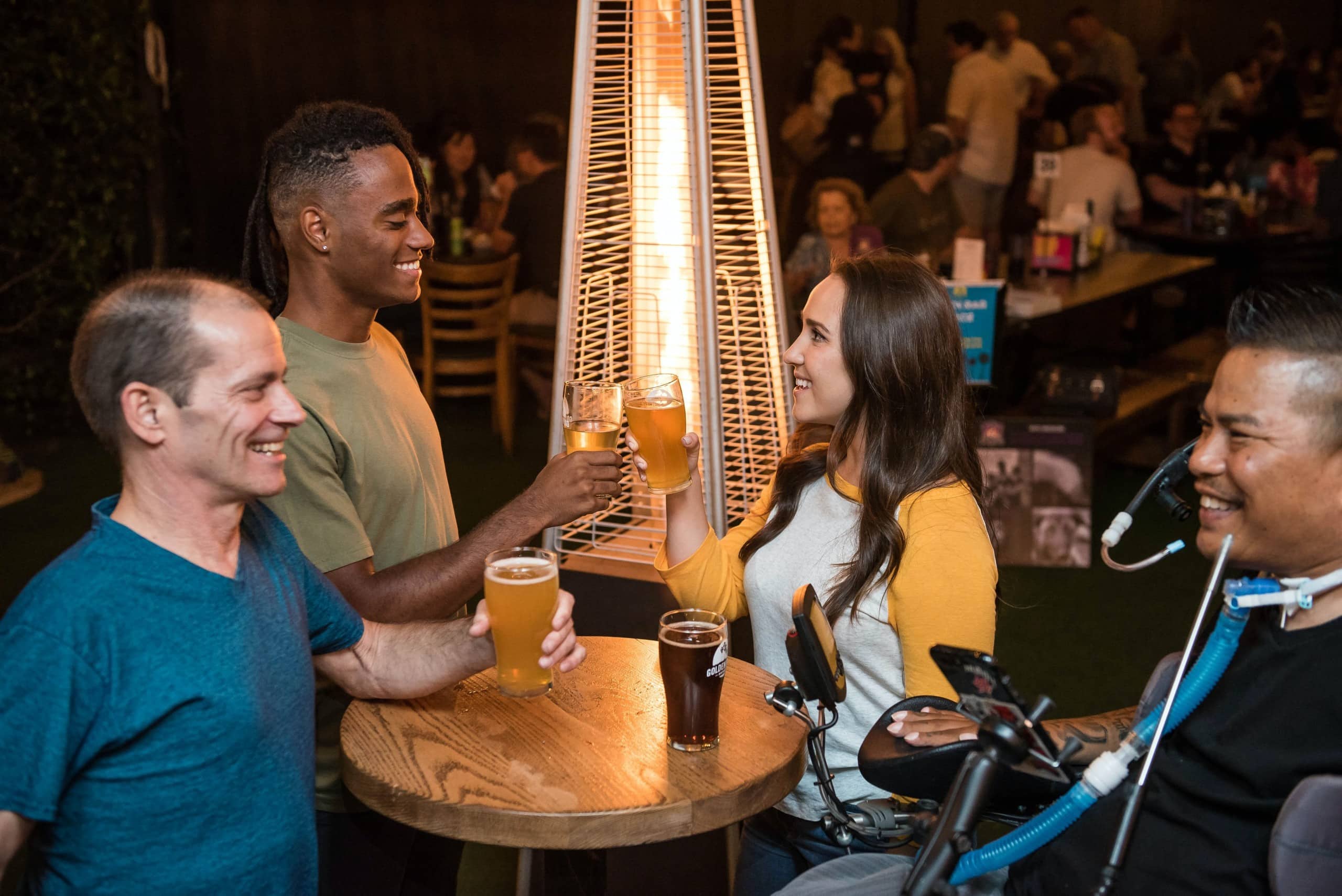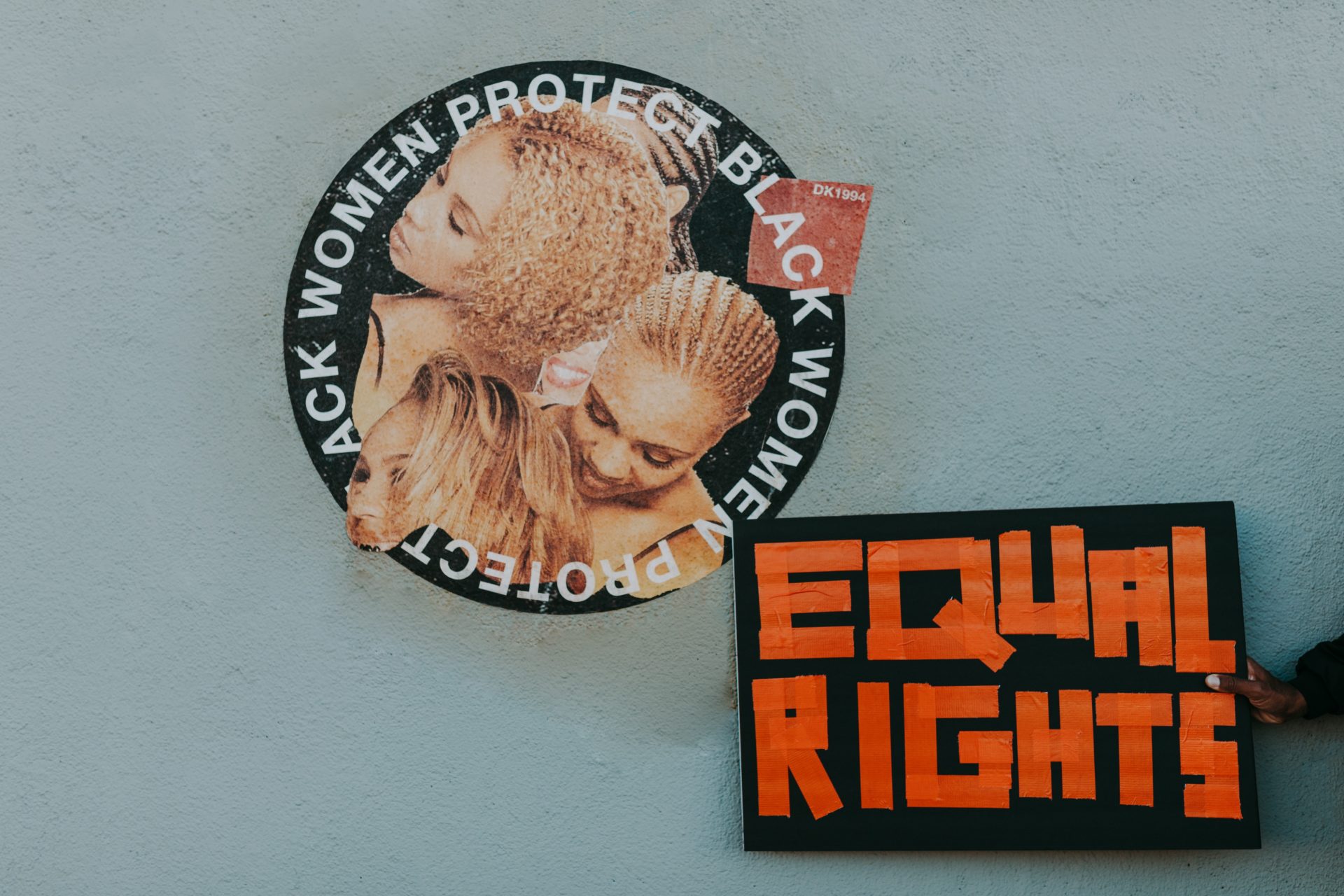Last updated on March 24th, 2022 at 04:03 pm
When we talk about accessibility, it’s not as simple as just just meeting a minimum bar required by law but really treating accessibility and inclusion as a holistic discipline, an active practice of embracing a spectrum of experiences that extend outside the label “abled”.
ADA Compliance
Following ADA guidelines and adhering to those legal requirements is obviously the first step.
“We put in a 60″ ADA bar due to new compliance requirements.”
Consider Physical Logistics and Constraints for a Spectrum of Abled and Disabled Customers
Samantha Jo Glenn at Funky Picnic Brewery & Café
Also, all of our chairs and tables are movable, so we can easily accommodate more comfortable room for wheelchairs, walkers, etc.I don’t know that any inspectors verified the height, but we made sure all public handwash stations were appropriate ADA height and access on installation as well. Baby changing tables are outside of stalls in both mens/womens and allow room and height for a wheelchair.
Beyond the Taproom with Online Accessibility
We met ADA requirements in the taproom, but also have changed our online menus to be text-read capable (i.e. no PNG/JPEG). This took a little more time to setup initially, as we also didn’t want to use PDF menus, but now it is easy to update.
I’ve heard there is also a way to add text descriptors to images on Facebook (and maybe IG) now for text-read programs, but we are not there yet.
Kelly Ferketich Weiss at Perkiomen Valley Brewery
We are disability, sensory and mobility friendly. Our family has a nano brewery where our sons with autism work. Before the brewery, I was the president of a local special education council for families for 7 years and worked in the field of special education for 15yrs. We work to make our brewery accessible and inclusive. Get ready! It’s a lengthy list: Our hoses on our tanks are color coded to match the tanks they are used on. Our bar has two different heights so people who use wheelchairs and walkers can opt to sit at the bar if they like. Our tables are spaced so people with wheelchairs or walkers can move freely. We have a companion bathroom with motorized adult changing table. We have a sensory room that has corked backed floors to dampen the sound. It has a fish tank, book nook, and noise canceling headphones. Pre-COVID we had other sensory items in there for calming and regulation for sensory over stimulation. We have daylight LED lights so people with low vision have appropriate light. We use dyslexie font for our logos and menus. We have masks with clear plastic across the mouth area for us to use when our patrons who read lips visit us. We are learning about how we can better help our legally blind patrons. I still want to get our beer descriptions in Braille. Our webpage and other social media are in the process of being updated so they have text to speech. PreCovid, we had family friendly events and we reach out to our families with kids (of all ages) with disabilities. We had a very successful sensory sensitive Santa evening last year.
Absolutely! Our goal is simple. We want all people coming to our brewery to feel 1) comfortable 2) that we care about them to plan a space where their needs were considered in the design and layout of the brewery. It is extraordinary when you go somewhere and realize that someone took the time, effort, and invested the resources because they care about you. People notice that. And people with disabilities and the people who love people with disabilities don’t find that very often. My mom’s friend had spinal surgery in her 30s that left her wheelchair bound. She and her family were very active prior but afterwards, it was extremely difficult to find accessible places for them to enjoy going to together. People don’t realize how that isolates a family, disconnects them from their community, and forces them to make choices like only part of the family being able to go somewhere together while the other family member(s) are left behind. A little planning goes a long way in constructing a space that can be accessible and inviting.
Our sensory room is part of the taproom but has the cork floor to dampen the noise. Pre-Covid, we had soft seating, sensory bin that we switched out through the seasons- beans, spring and summer, corn in the fall, white snow (fluff) in the winter. We have weighted lovies that have lavender in them for calming. The room itself is painted a very calm pink. We have kept the walls bare so we don’t over-stimulate the senses. All kinds of games and puzzles were in there. And of course, our resident fish.
Capitalizing Matters
Julie Sifford Rhodes from Not Your Hobby Marketing Solutions points out:
“In regards to social media marketing, if you capitalize the letters of each word in your hashtags, they will be properly read by text to speech tools. So #craftbeerprofessionals would be read as total nonsense words run together, but if you write #CraftBeerProfessionals the words will be read properly. Small but helpful adjustment.”
Inclusiveness As a Form of Accessibility
In Crafted For Action’s 2021 Session “Innovating Taproom Experiences”, Ren Navarro of Beer.Diversity, Michelle Turner of Excited to Feast, Tanya Barrios of Boston Beer Company, and LaTroya Butts of Five Wits Brewing Co. dropped an incredible amount of accessibility and inclusion knowledge on conference participants.
For me the taproom that I want to go to is the one that looks like the world we live in.”
— Michelle Turner
Signal Your Customers They’re in a Safe Space
Letting your guests know what kind of space they’re is more important than ever. Day-to-day life for some of us can be so relatively easy that we forget it’s a bit more challenging for others. Are you putting out the right signals that your tap or tasting room is a place that people from all walks of life can relax and be themselves? Small and large signs or banners that communicate your values will reassure customers that your brewery, winery, or distillery is a place they can confidently revisit time and again.








